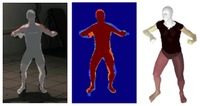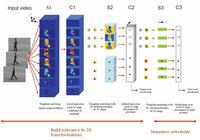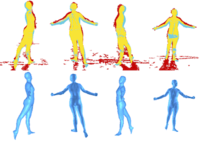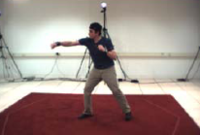Neuromotor prosthesis development
Donoghue, J.P., Hochberg, L.R., Nurmikko, A.V.,
Black, M.J., Simeral, J.D. and Friehs, G.
Medicine & Health Rhode Island,
90(1):12-15,
January
2007.
Abstract:
▸
Article describes a neuromotor prosthesis (NMP), in development at Brown University, that records human brain signals, decodes them, and transforms them into movement commands. An NMP is described as a system consisting of a neural interface, a decoding system, and a user interface, also called an effector; a closed-loop system would be completed by a feedback signal from the effector to the brain. The interface is based on neural spiking, a source of information-rich, rapid, complex control signals from the nervous system. The NMP described, named BrainGate, consists of a match-head sized platform with 100 thread-thin electrodes implanted just into the surface of the motor cortex where commands to move the hand emanate. Neural signals are decoded by a rack of computers that displays the resultant output as the motion of a cursor on a computer monitor. While computer cursor motion represents a form of virtual device control, this same command signal could be routed to a device to command motion of paralyzed muscles or the actions of prosthetic limbs. The researchers’ overall goal is the development of a fully implantable, wireless multi-neuron sensor for broad research, neural prosthetic, and human neurodiagnostic applications.
[Share]
Sending email...
































































































